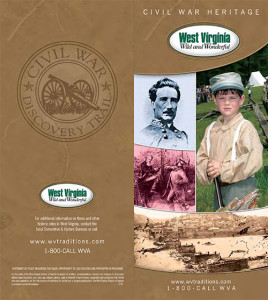West Virginia Statehood / Civil War
West Virginia Studies
West Virginia Statehood / Civil War
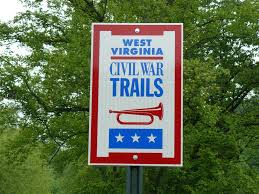
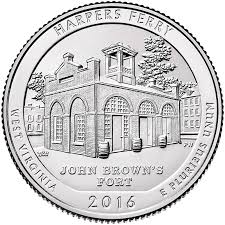
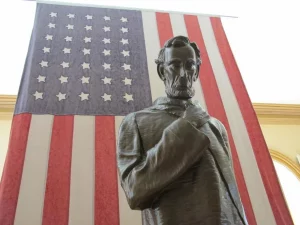
<< Here are the topics on this page; Click to jump/scroll down >>
“The Civil War” – US National Park Service
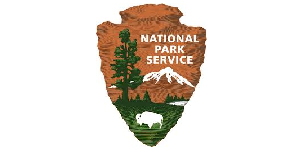

“4,000,000 freed. 750,000 dead. 1 nation saved.”
“From 1861 to 1865, the American union was broken as brother fought brother in a Civil War that remains a defining moment in our nation’s history. Its causes and consequences, including the continuing struggle for civil rights for all Americans, reverberate to this day. From the battlefields to the homefront, the cost of the war was steep…its lessons eternal.”
Explore US National Park Service’s “The Civil War” Website — (an incredible amount of information)
“Civil War Related Articles from e-WV, The West Virginia Encyclopedia”
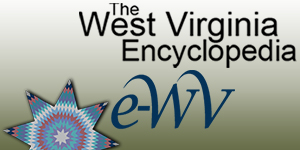

“Civil War” – West Virginia Archives & History
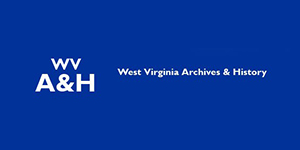
Very extensive lists include:
- Archives Sources
- General
- 1861
- 1862
- 1863
- 1864-65
- Individuals
- Post-war Activities
Explore West Virginia Archives and History’s “Civil War” Website
“West Virginia Civil War Timeline” – West Virginia Archives & History

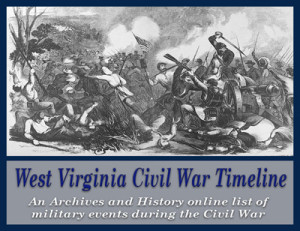 “In April 1960, with the approach of the Civil War centennial, West Virginia History published an article by Allen W. Jones, a professor of history at the University of Alabama-Montgomery, that listed military events in West Virginia during that conflict. The journal reprinted that article in its 1988 commemorative issue during West Virginia’s 125th anniversary. Below are Jones’s introductory remarks. Following is the list Jones compiled, which is provided in chronological rather than the alphabetical order used by Jones. Corrections for spelling and date also have been made.. .”
“In April 1960, with the approach of the Civil War centennial, West Virginia History published an article by Allen W. Jones, a professor of history at the University of Alabama-Montgomery, that listed military events in West Virginia during that conflict. The journal reprinted that article in its 1988 commemorative issue during West Virginia’s 125th anniversary. Below are Jones’s introductory remarks. Following is the list Jones compiled, which is provided in chronological rather than the alphabetical order used by Jones. Corrections for spelling and date also have been made.. .”
Explore West Virginia Archives and History’s “West Virginia Civil War Timeline” Website
“Civil War” – American Battlefield Trust
“The defining event in our nation’s history.”

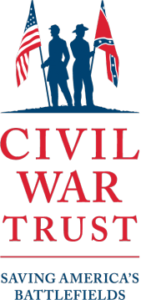 “Between 1861 and 1865, 10,000 battles and engagements were fought across the continent, from Vermont to the New Mexico Territory, and beyond. The four-year struggle between north and south made heroes of citizen soldiers, forever changed the role of women in society, and freed more than 3 million slaves. In the end, 620,000 or more Americans were left dead in its wake.”
“Between 1861 and 1865, 10,000 battles and engagements were fought across the continent, from Vermont to the New Mexico Territory, and beyond. The four-year struggle between north and south made heroes of citizen soldiers, forever changed the role of women in society, and freed more than 3 million slaves. In the end, 620,000 or more Americans were left dead in its wake.”
Explore American Battlefield Trust’s “Civil War” Website
“Working to Save America’s Battlefields”
 “The American Battlefield Trust and our members have saved more than 55,000 acres in 24 states!”
“The American Battlefield Trust and our members have saved more than 55,000 acres in 24 states!”
Explore “American Battlefield Trust” Website
<<Numerous videos from American Battlefield Trust are on this page>>
“Walk Gettysburg with Medal of Honor Recipient Hershel “Woody” Williams”
 “Visit Gettysburg National Military Park with Medal of Honor recipient Hershel Woody Williams and learn how his combat on Iwo Jima benefitted from the experience of Civil War soldiers.” (6:15/2019/American Battlefield Trust)
“Visit Gettysburg National Military Park with Medal of Honor recipient Hershel Woody Williams and learn how his combat on Iwo Jima benefitted from the experience of Civil War soldiers.” (6:15/2019/American Battlefield Trust)
“The Civil War Between the States – A Civil War Overview – The Civil War in Four Minutes”
 “Join Historian Garry Adelman as he gives an overview of the causes, campaigns, and conclusion of the American Civil War. Watch now to discover the key events that led to the outbreak of the war, and why it’s effect on the nation is still so visible today.” (4:26/2013/American Battlefield Trust)
“Join Historian Garry Adelman as he gives an overview of the causes, campaigns, and conclusion of the American Civil War. Watch now to discover the key events that led to the outbreak of the war, and why it’s effect on the nation is still so visible today.” (4:26/2013/American Battlefield Trust)
“West Virginia in the Civil War” – American Battlefield Trust

“Join West Virginia native and educator Phil Caskey as he explains the birth of West Virginia, and how the newly formed state affected the outcome of the Civil War. Watch now to learn about several prominent battles that were fought on West Virginia soil and to find out about several famous figures of the Civil War who hailed from the territory that would become West Virginia.” (2:21/2017/American Battlefield Trust)
“West Virginia in the Civil War” – Steven A. Cunningham
Lots of information – Check out all the tabs at the top of the page.
Explore Steven A. Cunningham’s “West Virginia in the Civil War” Website – (Limited sponsor advertisements.)
“West Virginia Commemorates 150th Anniversary of the Civil War”

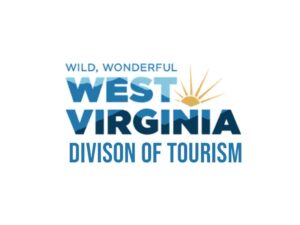 “This year [2011] marks the 150th anniversary of the start of the American Civil War. The harrowing battle raged for four years, pitting brother against brother at the cost of more than 600,000 lives. Out of the war, however, there rose a new state, and the only one created as a direct result of the war – West Virginia! . . .” — Andrea Bond
“This year [2011] marks the 150th anniversary of the start of the American Civil War. The harrowing battle raged for four years, pitting brother against brother at the cost of more than 600,000 lives. Out of the war, however, there rose a new state, and the only one created as a direct result of the war – West Virginia! . . .” — Andrea Bond
Explore Information from West Virginia Tourism’s “West Virginia Commemorates 150th Anniversary of the Civil War” Website (deactivated) to continue reading (pdf)— Includes short summaries of The First Campaign, The Battle of Philippi, Places to See, Things to Do, Some West Virginia ‘Civil War Firsts,’ McNeill’s Rangers, Civil War Trails, and ‘Honey in the Rock’
“West Virginia Civil War Discovery Trail” – Civil War Trust
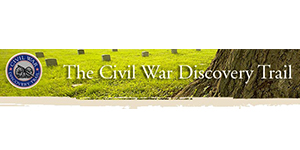
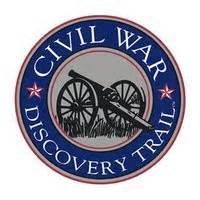 “The Civil War Discovery Trail links more than 636 sites in 34 states to inspire and to teach the story of the Civil War and its haunting impact on America. An initiative of The Civil War Trust, the Trail allows visitors to explore battlefields, historic homes, railroad stations, cemeteries, parks and other destinations that bring history to life.”
“The Civil War Discovery Trail links more than 636 sites in 34 states to inspire and to teach the story of the Civil War and its haunting impact on America. An initiative of The Civil War Trust, the Trail allows visitors to explore battlefields, historic homes, railroad stations, cemeteries, parks and other destinations that bring history to life.”
Gives short description for each of the following topics.
- Belle Boyd House and Civil War Museum and Archives
- Bulltown Historic Area
- Camp Allegheny
- Carnifex Ferry Battlefield State Park
- Cheat Summit Fort
- Droop Mountain Battlefield State Park
- Grafton National Cemetery
- Harpers Ferry National Historical Park
- Jackson’s Mill Historic Area
- Jenkins Plantation Museum
- Lewisburg National Register Historic District / Greenbrier County Visitor Center
- Philippi Covered Bridge
- Philippi Historic District
- Rich Mountain Battlefield Civil War Site
- Shepherdstown Historic District
- West Virginia Independence Hall Museum
Explore Information from Civil War Trust’s “Civil War Discovery Trail” (deactivated) Website (pdf)
“Civil War History”
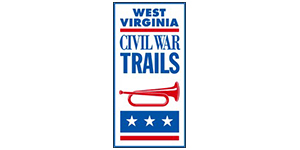
 “The slavery question, which between 1830 and 1860 tore at the fabric of the nation, left the Commonwealth of Virginia equally as divided. Perhaps the most incendiary of all events connected with the slavery issue took place on what is now West Virginia soil, with the seizure of the federal arsenal at Harpers Ferry in 1859 by the fiery abolitionist, John Brown. His plan. . .”
“The slavery question, which between 1830 and 1860 tore at the fabric of the nation, left the Commonwealth of Virginia equally as divided. Perhaps the most incendiary of all events connected with the slavery issue took place on what is now West Virginia soil, with the seizure of the federal arsenal at Harpers Ferry in 1859 by the fiery abolitionist, John Brown. His plan. . .”
Explore Information from West Virginia Tourism’s “Civil War History” Website (deactivated) to continue reading. (pdf)
“West Virginia Civil War Historic Sites”

 Explore Information from West Virginia Tourism’s “Civil War Historic Sites” Website (deactivated) (pdf) — Includes 32 sites plus 13 Civil War Cemeteries.
Explore Information from West Virginia Tourism’s “Civil War Historic Sites” Website (deactivated) (pdf) — Includes 32 sites plus 13 Civil War Cemeteries.
“West Virginia Civil War Trails” Brochure
“ This brochure features 150 unique Civil War sites throughout West Virginia.” Comprehensive guide includes many maps of the War, and an excellent timeline.
This brochure features 150 unique Civil War sites throughout West Virginia.” Comprehensive guide includes many maps of the War, and an excellent timeline.
 “Sites of Civil War Trails Signs in West Virginia”
“Sites of Civil War Trails Signs in West Virginia”

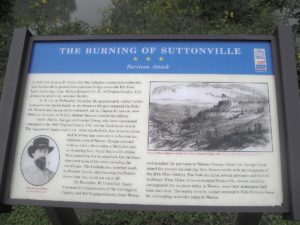 Locations of the signs (such as this one about “The Burning of Suttonsville”) on the Civil War Trails in West Virginia, with short explanations of each site and events that took place there.
Locations of the signs (such as this one about “The Burning of Suttonsville”) on the Civil War Trails in West Virginia, with short explanations of each site and events that took place there.
Three parts:
—–
1) “John Brown and Harper’s Ferry plus Charles Town and Shepherdstown” – includes: Harpers Ferry National Historical Park | Jackson at Harpers Ferry | St. John’s Lutheran Church | Allstadt House | Charles Town | Jefferson County Courthouse | John Brown Hanging Site | The Greenback Raid | Rutherford House | Edge Hill Cemetery | Cameron’s Depot Engagement | Zion Episcopal Churchyard | Kabletown Engagement | Shepherdstown in the Civil War | Molar’s Crossroads | Elmwood Cemetery | Fountain Rock | Keyes’ Switch Engagement | Duffields Depot Raid
2) “The First Campaign, 1861, in the Mountains” – includes: The Staunton-Parkersburg Turnpike Corridor (US 250) || Philippi | Talbott’s Hill | Elkins | McClellan’s Camp | Rich Mountain Battlefield | The Battle of Laurel Hill Driving Tour | Corrick’s Ford | Cheat Summit Fort | “Huntersville” | Camp Allegheny
3) “More Civil War Sites” – includes: Martinsburg | Wheeling | Charleston | Parkersburg | Huntington | Harrisville | Beverly | Barboursville | Elizabeth | Ravenswood | Williamstown | Summersville | Marlinton | Lewisburg | Buckhannon | Union | Romney | Berkeley Springs | Moorefield | Petersburg | Rowlesburg | Fairmont | Oceana | Sutton | Burnsville/Napier | Glenville | Clarksburg | Arnoldsburg | Gauley Bridge | Fayetteville | Ansted | Alderson | Princeton | Spencer | Weston | Franklin | Morgantown
Explore Information from Civil War Traveler’s “More Sites” (deactivated) Website
“West Virginia Civil War Heritage” Brochure
Includes descriptions of: West Virginia’s Role in the Civil War; John Brown’s Raid; The First Campaign; Jones-Imboden Raids of 1863; Civil War Cemeteries; and 29 other Historic Sites.
<<Same information but in different formats>>
“West Virginia Civil War First Campaign Trail” Brochure
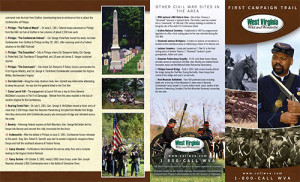
Explore West Virginia Tourism’s “Civil War First Campaign Trail” Brochure (pdf)
“Hills of Blue and Gray” Brochure
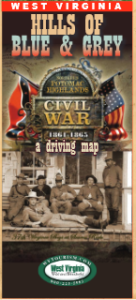 Includes map and description of sites in Grant, Hardy, Hampshire, Mineral and Pendleton Counties [the “Near Eastern Panhandle”]
Includes map and description of sites in Grant, Hardy, Hampshire, Mineral and Pendleton Counties [the “Near Eastern Panhandle”]
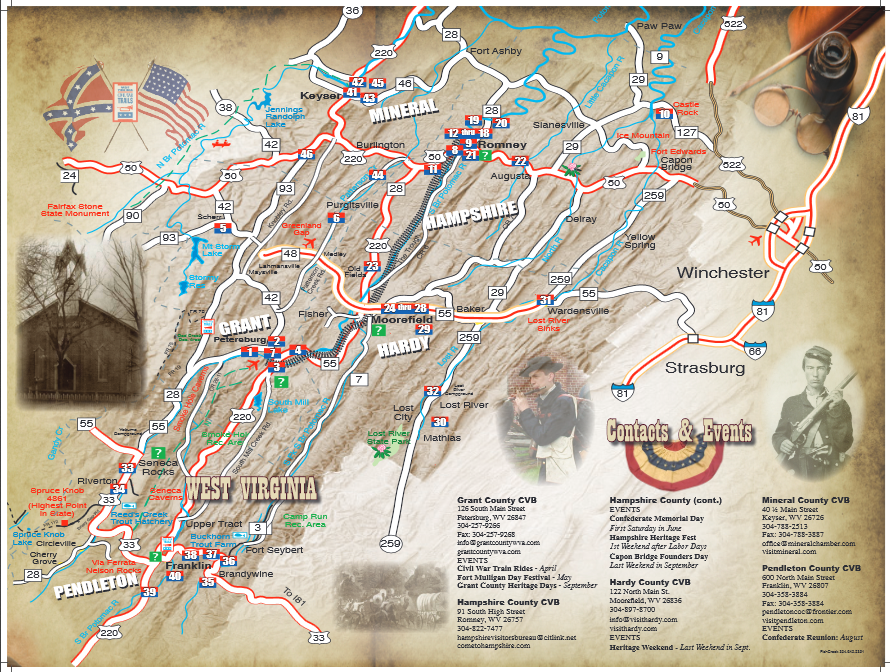
“West Virginia Civil War Trails of Hampshire, Hardy, and Grant Counties” Brochure


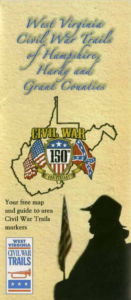 Information on sites in the three counties, plus a timeline, historic photos, and additional discussion of Fort Mill Ridge, Fort Mulligan and the Battle of Moorefield.
Information on sites in the three counties, plus a timeline, historic photos, and additional discussion of Fort Mill Ridge, Fort Mulligan and the Battle of Moorefield.
“Civil War in Pendleton County, West Virginia” Brochure
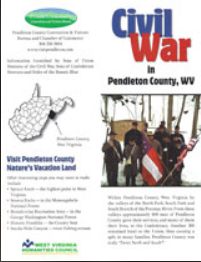 “Within Pendleton County, West Virginia, lie the valleys of the North Fork, the South Fork and the South Branch of the Potomac River. From these valleys, approximately 800 men of Pendleton Caouty gave their services, and many of them their lives, to the Confederacy. Another 300 remained loyal to the Union, thus causing a split in many families. Pendleton County was truly ‘Twixt North and South’ . . .”
“Within Pendleton County, West Virginia, lie the valleys of the North Fork, the South Fork and the South Branch of the Potomac River. From these valleys, approximately 800 men of Pendleton Caouty gave their services, and many of them their lives, to the Confederacy. Another 300 remained loyal to the Union, thus causing a split in many families. Pendleton County was truly ‘Twixt North and South’ . . .”
West Virginia Civil War / Statehood
“His Soul Goes Marching On – The Life and Legacy of John Brown” – Online Exhibit
 “
“ One person there was, . . . to whom earthly fame or human discredit seemed of very small account; who yet suffered the extremes of both. This was John Brown, – a man who made the most common of names uncommonly famous, and, as many said infamous; an old man when the world began to take note of him; but who yet achieved much that might seem to be the task of young men; who, in the words of an old book, ‘Being perfected in a short time fulfilled a long time.'” – Frank Sanborn
One person there was, . . . to whom earthly fame or human discredit seemed of very small account; who yet suffered the extremes of both. This was John Brown, – a man who made the most common of names uncommonly famous, and, as many said infamous; an old man when the world began to take note of him; but who yet achieved much that might seem to be the task of young men; who, in the words of an old book, ‘Being perfected in a short time fulfilled a long time.'” – Frank Sanborn
“In 1860, John Brown was at one and the same time the most despised and deified man in the United States. Born in . . .”
Includes:
Introduction
1: Childhood and Early Adult Years
2: Springfield and North Elba
3: The Abolitionist Calling
4: To “defeat Satan and his legions” in Kansas
5: Bleeding Kansas
6: The Eastern Connection
7: Preparing to “take the war into Africa”
8: Harpers Ferry
9: Final Preparations
10: The Raid
11: The Commonwealth of Virginia v. John Brown and His Men
12: Death and Burial
13: Toward Civil War
14: His Soul Goes Marching On
Other Resource Links include:
“Primary Documents”
“Images”
“John Brown Lesson Plans”
“Sources Consulted”
“John Brown/Boyd B. Stutler Collection Database (West Virginia Archives and History Memory Project)”
“Further Reading”
“John Brown: Hero? Villain? Martyr?: Civil War West Virginia”
 “The capture, trial and hanging of John Brown thrust the nation one step closer to armed conflict. Garry Adelman is joined by former park ranger and Co-Founder of the American Battlefield Trust Dennis Frye to discuss the complicated legacy of John Brown at the site where he ultimately took his last breath.” (11:37/2020/American Battlefield Trust)
“The capture, trial and hanging of John Brown thrust the nation one step closer to armed conflict. Garry Adelman is joined by former park ranger and Co-Founder of the American Battlefield Trust Dennis Frye to discuss the complicated legacy of John Brown at the site where he ultimately took his last breath.” (11:37/2020/American Battlefield Trust)
“Stonewall Jackson – A Civil War Overview – The Civil War in Four Minutes”
“Chris Mackowski of Emerging Civil War details the life of famed Confederate General Thomas “Stonewall” Jackson.” (4:09/2019/American Battlefield Trust)
(4:09/2019/American Battlefield Trust)
“Stonewall Jackson’s Headquarters and All Things Romney, WV: Civil War West Virginia”
![]() “Did control of this small town in West Virginia (Virginia until 1863) really change hands 56 times during the Civil War? Kris White of the American Battlefield Trust details all things Romney, West Virginia from the spot of one of Stonewall Jackson’s Headquarters during his Shenandoah Campaign.” (21:53/2020/American Battlefield Trust)
“Did control of this small town in West Virginia (Virginia until 1863) really change hands 56 times during the Civil War? Kris White of the American Battlefield Trust details all things Romney, West Virginia from the spot of one of Stonewall Jackson’s Headquarters during his Shenandoah Campaign.” (21:53/2020/American Battlefield Trust)
“Remembering Thomas Jackson Before He Was ‘Stonewall’ “
March 17, 2013
 “Joseph H. Diss Debarr sketched the profile of Maj. Thomas Jackson on a piece of newspaper in October 1860. Jackson was in the Parkersburg. . .”
“Joseph H. Diss Debarr sketched the profile of Maj. Thomas Jackson on a piece of newspaper in October 1860. Jackson was in the Parkersburg. . .”
West Virginia Civil War / Statehood
“American Battlefield Protection Program”
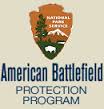

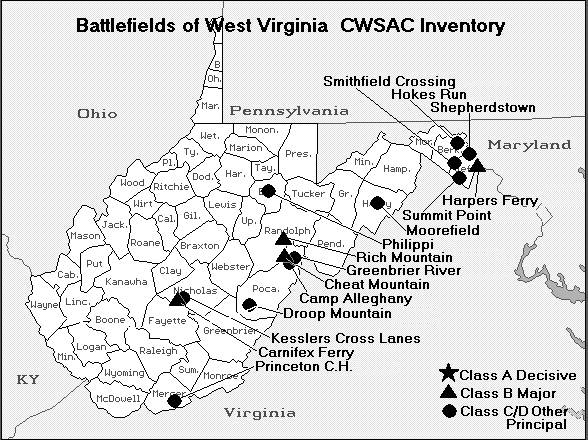
Explore National Park Service’s “American Battlefield Protection Program” Website
“John Brown’s Raid at Harpers Ferry: Civil War West Virginia” – October 16 – 18, 1859
![]() “It makes perfect sense to start our video trip through West Virginia and Kentucky not only right on the geographic edge of our theater, but also at one of the main sparks that helped propel the country toward war—John Brown’s Raid at Harpers Ferry. Garry Adelman is joined by former park ranger and co-founder of the American Battlefield Trust, Dennis Frye, for this in-depth breakdown!” (16:56/2020/AmericanBattlefield Trust)
“It makes perfect sense to start our video trip through West Virginia and Kentucky not only right on the geographic edge of our theater, but also at one of the main sparks that helped propel the country toward war—John Brown’s Raid at Harpers Ferry. Garry Adelman is joined by former park ranger and co-founder of the American Battlefield Trust, Dennis Frye, for this in-depth breakdown!” (16:56/2020/AmericanBattlefield Trust)
“John Brown Takes Hostages in the Countryside: Civil War West Virginia”
![]() “Garry Adelman and former park ranger and Co-Founder of the American Battlefield Trust Dennis Frye head to Allstadt’s Ordinary, an important and strategic piece of land preserved by the Trust in 2019. Here, John Brown’s Raiders made a stop to capture hostages as bargaining chips for their mission in 1859. The property is also in the heart of the Harpers Ferry Battlefield from the fighting in 1862.” (6:58/2020/American Battlefield Trust)
“Garry Adelman and former park ranger and Co-Founder of the American Battlefield Trust Dennis Frye head to Allstadt’s Ordinary, an important and strategic piece of land preserved by the Trust in 2019. Here, John Brown’s Raiders made a stop to capture hostages as bargaining chips for their mission in 1859. The property is also in the heart of the Harpers Ferry Battlefield from the fighting in 1862.” (6:58/2020/American Battlefield Trust)
“The Campaign of 1861 in Western Virginia”
“Upon the outbreak of Civil War in 1861, the Staunton-Parkersburg Pike was a vital link between the heart of Virginia and its western counties, as well as a gateway to the B&O Railroad.”
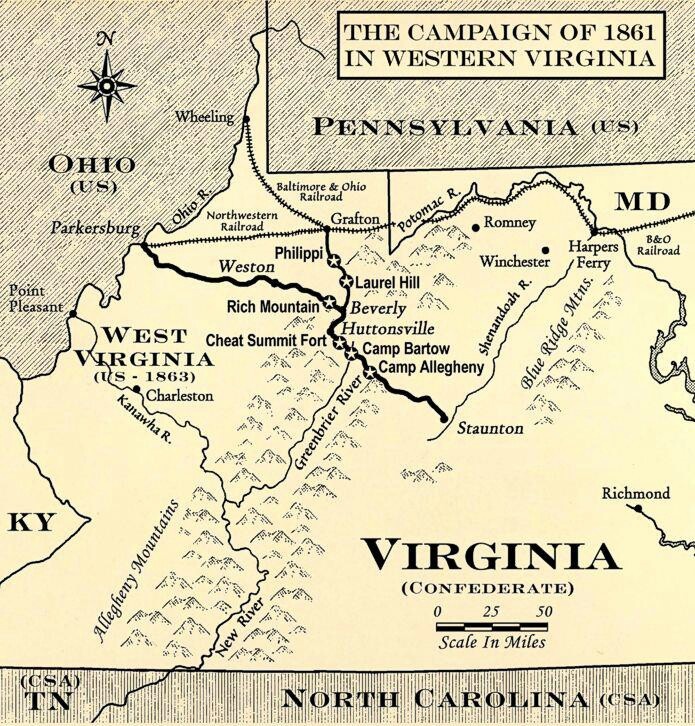
“Richmond was anxious to hold onto all of its territory, and sent Col. George Porterfield to hold northwestern Virginia for the south. The Staunton-Parkersburg Turnpike, and its connecting pikes to the north and south, gave the South access into the mountain territory to strike at the railroad.
“As Virginia moved towards secession from the Union, many in the far western counties were determined to stay in the Union. These counties had long felt neglected by the Richmond government and some disaffected western Virginians seized this opportunity to form a new government independent of Richmond. They were encouraged by the Federal government who needed to maintain control of the vital B&O Railroad . . .”
Includes:
- The Philippi Races
- Rich Mountain
- Laurel Hill
- Corrick’s Ford
- McClellan’s Victory
- Lee’s Cheat Mountain Campaign
- Camp Bartow – The Battle of Greenbrier River
- Camp Allegheny
- Winter Camps
“Cheat Summit Fort”
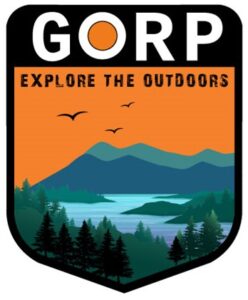 “Also referred to as Fort Milroy, Cheat Summit Fort is a Civil War period Federal fortification located near U.S. Route 250 south of Huttonsville, Randolph County, West Virginia. The fort is located on the 19th century route of the Staunton-Parkersburg Turnpike, approximately 1.5 miles from Cheat Bridge. The site is about 4,000 feet above sea level, on the summit of Cheat Mountain. . .”
“Also referred to as Fort Milroy, Cheat Summit Fort is a Civil War period Federal fortification located near U.S. Route 250 south of Huttonsville, Randolph County, West Virginia. The fort is located on the 19th century route of the Staunton-Parkersburg Turnpike, approximately 1.5 miles from Cheat Bridge. The site is about 4,000 feet above sea level, on the summit of Cheat Mountain. . .”
“Camp Allegheny”
 “Also known as Camp Baldwin or Camp Johnson, Camp Allegheny is a Civil War era Confederate fortification located astride the Staunton-Parkersburg Turnpike in Pocahontas County, West Virginia. Camp Allegheny was built in the summer of 1861 by Confederate forces . . .”
“Also known as Camp Baldwin or Camp Johnson, Camp Allegheny is a Civil War era Confederate fortification located astride the Staunton-Parkersburg Turnpike in Pocahontas County, West Virginia. Camp Allegheny was built in the summer of 1861 by Confederate forces . . .”
![]() “GORP is an outdoor & sporting goods company dedicated to helping people explore the outdoors.”
“GORP is an outdoor & sporting goods company dedicated to helping people explore the outdoors.”
Explore “GORP” commercial website – very limited advertisements
“Philippi Covered Bridge and First Land Battle of the Civil War: Civil War West Virginia” – June 3, 1861
![]() “Move over Manassas, the first land battle of the American Civil War was actually fought in Philippi, West Virginia almost two months earlier! Garry Adelman is joined by Rick Wolfe of the Rich Mountain Battlefield Foundation to discuss this little known action, which played a big part in West Virginia becoming its own state in 1863.” (23:00/2020/American Battlefield Trust)
“Move over Manassas, the first land battle of the American Civil War was actually fought in Philippi, West Virginia almost two months earlier! Garry Adelman is joined by Rick Wolfe of the Rich Mountain Battlefield Foundation to discuss this little known action, which played a big part in West Virginia becoming its own state in 1863.” (23:00/2020/American Battlefield Trust)
“First Battlefield Amputation of the Civil War: James Hanger.” – June 1861
(:44/2020/American Battlefield Trust)
“Battle of Laurel Hill” – July 7-11, 1861

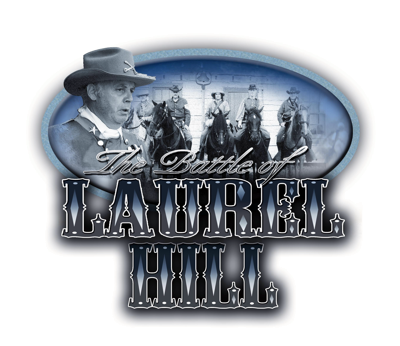 “The first land battles of America’s Civil War took place in the Tygart Valley of present-day West Virginia. Newspaper headlines across the country screamed word of events from western Virginia in June and July 1861. Here Union troops under General George B. McClellan advanced on Confederates in the first land battles of the Civil War at Philippi, Laurel Hill, Rich Mountain and Corricks Ford. . .”
“The first land battles of America’s Civil War took place in the Tygart Valley of present-day West Virginia. Newspaper headlines across the country screamed word of events from western Virginia in June and July 1861. Here Union troops under General George B. McClellan advanced on Confederates in the first land battles of the Civil War at Philippi, Laurel Hill, Rich Mountain and Corricks Ford. . .”
Explore Friends of Laurel Hill Battlefield’s “Battle of Laurel Hill” Website
“Rich Mountain Battlefield” – July 11, 1861
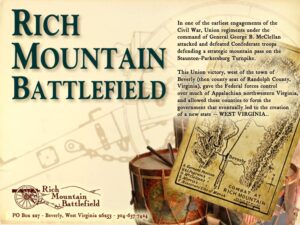 “A Concise Version: On 11 July 1861, in one of the first engagements of the American Civil War, Union regiments under the overall command of General George B. McClellan attacked and defeated Confederate troops defending a strategic mountain pass on the Staunton-Parkersburg Turnpike.
“A Concise Version: On 11 July 1861, in one of the first engagements of the American Civil War, Union regiments under the overall command of General George B. McClellan attacked and defeated Confederate troops defending a strategic mountain pass on the Staunton-Parkersburg Turnpike.
 “This Union victory, west of the town of Beverly (then county seat of Randolph County, Virginia), brought General McClellan to national prominence. More importantly, it gave the Federal forces control over much of Appalachian northwestern Virginia and allowed these counties to form a government that eventually led to the creation of a new state: West Virginia!”
“This Union victory, west of the town of Beverly (then county seat of Randolph County, Virginia), brought General McClellan to national prominence. More importantly, it gave the Federal forces control over much of Appalachian northwestern Virginia and allowed these counties to form a government that eventually led to the creation of a new state: West Virginia!”
Explore information from Rich Mountain Battlefield’s “The Battle of Rich Mountain” Website (pdf)
Explore informarion from Rich Mountain Battlefield’s
“Color Brochure”
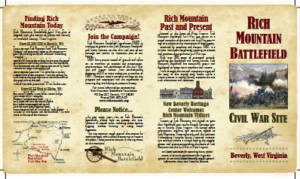

Explore Rich Mountain Battlefield’s “Color Brochure” (pdf)
“The Battle of Rich Mountain: Civil War West Virginia”
![]() “We are high above Rich Mountain in West Virginia covering one of the earliest battles of the American Civil War. The Battle of Rich Mountain, fought on July 11, 1861, was a major early victory for Union forces that propelled Maj. Gen. George B. McClellan into overall Union command. Garry Adelman is joined by Richard Wolfe of the Rich Mountain Battlefield Foundation for an exploration of the Rich Mountain battlefield.” (20:46/2020/American Battlefield Trust)
“We are high above Rich Mountain in West Virginia covering one of the earliest battles of the American Civil War. The Battle of Rich Mountain, fought on July 11, 1861, was a major early victory for Union forces that propelled Maj. Gen. George B. McClellan into overall Union command. Garry Adelman is joined by Richard Wolfe of the Rich Mountain Battlefield Foundation for an exploration of the Rich Mountain battlefield.” (20:46/2020/American Battlefield Trust)
“Corrick’s Ford Battlefield” – July 13, 1861
“Battle of Corricks Ford: A History”
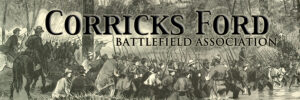 “Confederate General Robert S. Garnett took command of the Army of the Northwest in this region after the “Philippi Races,” the first land battle of the Civil War. By June 16, 1861, Garnett’s 5,300 Confederates dug in at Rich Mountain and Laurel Hill, more than 25 miles south, to stop an invasion by Union General George McClellan. . . “
“Confederate General Robert S. Garnett took command of the Army of the Northwest in this region after the “Philippi Races,” the first land battle of the Civil War. By June 16, 1861, Garnett’s 5,300 Confederates dug in at Rich Mountain and Laurel Hill, more than 25 miles south, to stop an invasion by Union General George McClellan. . . “

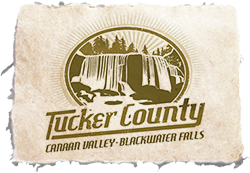 “Confederate General Robert S. Garnett took command of the Army of the Northwest after the “Philippi Races” in early June 1861. By June 16, 1861, Garnett’s 5,300 troops had dug in west of Beverly at Rich Mountain and on Laurel Hill some sixteen miles south. These strategic locations were chosen to stop an invasion by Union Troops commanded by General George McClellan. . .”
“Confederate General Robert S. Garnett took command of the Army of the Northwest after the “Philippi Races” in early June 1861. By June 16, 1861, Garnett’s 5,300 troops had dug in west of Beverly at Rich Mountain and on Laurel Hill some sixteen miles south. These strategic locations were chosen to stop an invasion by Union Troops commanded by General George McClellan. . .”
 “Following the Union victory at the Battle of Rich Mountain in Randolph County, CSA General Robert Garnett realized that retreat was the only prudent action for his 3,000 to 5,000 troops. He turned east toward the Cheat River . . . “
“Following the Union victory at the Battle of Rich Mountain in Randolph County, CSA General Robert Garnett realized that retreat was the only prudent action for his 3,000 to 5,000 troops. He turned east toward the Cheat River . . . “
“The Battle of Corrick’s Ford: Civil War West Virginia”
![]() “We are coming to you from the banks of Shaver’s Fork on the Cheat River. The Battle of Corrick’s Ford was the final action of the Rich Mountain Campaign of 1861, and the site where Confederate Brig. Gen. Robert S. Garnett fell in action. Garnett was the first general officer to fall in combat in the American Civil War. Join Kris White in the field for more.” (9:13/2020/American Battlefield Trust)
“We are coming to you from the banks of Shaver’s Fork on the Cheat River. The Battle of Corrick’s Ford was the final action of the Rich Mountain Campaign of 1861, and the site where Confederate Brig. Gen. Robert S. Garnett fell in action. Garnett was the first general officer to fall in combat in the American Civil War. Join Kris White in the field for more.” (9:13/2020/American Battlefield Trust)
“The Battle of Kessler’s Cross Lanes: Civil War West Virginia” – August 26, 1861
![]() “The August 1861 Battle of Kessler’s Cross Lanes was the prelude to the Battle of Carnifex Ferry. Join Kris White as he details this overlooked Civil War site in West Virginia, that was one of the few bright spots for the Confederacy as they grappled for control of ‘Western Virginia.’ ” (12:52/2020/American Battlefield Trust)
“The August 1861 Battle of Kessler’s Cross Lanes was the prelude to the Battle of Carnifex Ferry. Join Kris White as he details this overlooked Civil War site in West Virginia, that was one of the few bright spots for the Confederacy as they grappled for control of ‘Western Virginia.’ ” (12:52/2020/American Battlefield Trust)
“The Battle of Carnifex Ferry: Civil War West Virginia” – September 10, 1861
![]() “On September 10, 1861, Union and Confederate forces clashed high above the Gauley River in Virginia (today West Virginia). The Battle of Carnifex Ferry featured no less than 20 current and future Civil War generals, and the strategic Union victory helped to secure the push for West Virginia statehood. Join Kris White for this deep-dive into the battle.” (25:06/2020/American Battlefield Trust)
“On September 10, 1861, Union and Confederate forces clashed high above the Gauley River in Virginia (today West Virginia). The Battle of Carnifex Ferry featured no less than 20 current and future Civil War generals, and the strategic Union victory helped to secure the push for West Virginia statehood. Join Kris White for this deep-dive into the battle.” (25:06/2020/American Battlefield Trust)
<<More information about the Battles of Carnifex Ferry and Droop Mountain are on the “State Parks/Forests” page>>
“Battle of Carnifex Ferry 150th Anniversary”
“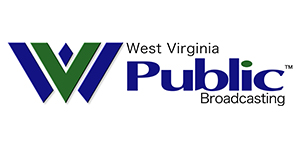 On September 10, 1861, Union and Confederate troops fought atop Carnifex Ferry in a battle pivotal to the withdrawal of rebel forces from what is now West Virginia. Clark Davis has this report, centered on the annual reenactment in 2009.” (3:31/2009/WV Public Broadcasting)
On September 10, 1861, Union and Confederate troops fought atop Carnifex Ferry in a battle pivotal to the withdrawal of rebel forces from what is now West Virginia. Clark Davis has this report, centered on the annual reenactment in 2009.” (3:31/2009/WV Public Broadcasting)
<<More information about the Battles of Carnifex Ferry and Droop Mountain are on the “State Parks/Forests” page>>
“The Battle of Harpers Ferry: 158th Anniversary of Antietam Live!” – September 12 – 15, 1862
![]() “Join Garry Adelman and former park ranger and Co-Founder of the American Battlefield Trust Dennis Frye from Bolivar Heights as they detail the Battle of Harpers Ferry from September 12 – September 15 leading up to the Battle of Antietam on September 17, 1862.” (29:04/2020/American Battlefield Trust)
“Join Garry Adelman and former park ranger and Co-Founder of the American Battlefield Trust Dennis Frye from Bolivar Heights as they detail the Battle of Harpers Ferry from September 12 – September 15 leading up to the Battle of Antietam on September 17, 1862.” (29:04/2020/American Battlefield Trust)
“Harpers Ferry Virtual Tour: Civil War West Virginia”
![]() “Garry Adelman gives a in-depth tour of downtown Harpers Ferry and makes the trek up to the top of Maryland Heights, just as Civil War soldiers did 157 years ago.” (24:33/2020/American Battlefield Trust)
“Garry Adelman gives a in-depth tour of downtown Harpers Ferry and makes the trek up to the top of Maryland Heights, just as Civil War soldiers did 157 years ago.” (24:33/2020/American Battlefield Trust)
“Harpers Ferry Bonus Episode: A Wildly Historic Boat Ramp!: Civil War West Virginia”
![]() “Former park ranger and Co-Founder of the American Battlefield Trust Dennis Frye shows off one of his favorite “hidden gems” in Harpers Ferry.” (11:04/2020/American Battlefield Trust)
“Former park ranger and Co-Founder of the American Battlefield Trust Dennis Frye shows off one of his favorite “hidden gems” in Harpers Ferry.” (11:04/2020/American Battlefield Trust)
“Battle of Shepherdstown West Virginia” – September 19 – 20, 1862
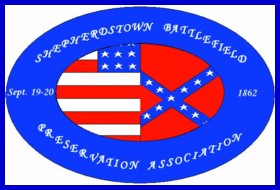 “The battle fought here on September 19 and 20, 1862, brought to an end the Army of Northern Virginia’s Maryland Campaign and was a significant factor in General Robert E. Lee’s decision to retreat farther into the Shenandoah Valley. The battle is of significant historical value to our nation and a valuable West Virginia Landmark.”
“The battle fought here on September 19 and 20, 1862, brought to an end the Army of Northern Virginia’s Maryland Campaign and was a significant factor in General Robert E. Lee’s decision to retreat farther into the Shenandoah Valley. The battle is of significant historical value to our nation and a valuable West Virginia Landmark.”
<<In the future, this area may be added to Antietam National Battlefield or to Harpers Ferry National Historical Park>>
Explore “Shepherdstown Battlefield Preservation Association” Website
“Antietam Leading to The Battle of Shepherdstown – 158th Anniversary of Antietam (Sharpsburg)”
 “As we wrap up our Antietam Anniversary coverage, enjoy this in-depth piece about the overlooked Battle of Shepherdstown and the official end of the Maryland Campaign. Garry Adelman is joined by former park ranger and Co-Founder of the American Battlefield Trust Dennis Frye and Tom Clemens from the Save Historic Antietam Foundation.” (20:30/2020/American Battlefield Trust)
“As we wrap up our Antietam Anniversary coverage, enjoy this in-depth piece about the overlooked Battle of Shepherdstown and the official end of the Maryland Campaign. Garry Adelman is joined by former park ranger and Co-Founder of the American Battlefield Trust Dennis Frye and Tom Clemens from the Save Historic Antietam Foundation.” (20:30/2020/American Battlefield Trust)
“Battle, Death and Burial. A Confederate Cemetery in Divided Charles Town: Civil War West Virginia”
![]() “Garry and Dennis make a stop at Edge Hill Cemetery in Charles Town, West Virginia to detail what happened to the Confederate soldiers killed at the Battle of Antietam.” (7:12/2020/American Battlefield Trust)
“Garry and Dennis make a stop at Edge Hill Cemetery in Charles Town, West Virginia to detail what happened to the Confederate soldiers killed at the Battle of Antietam.” (7:12/2020/American Battlefield Trust)
“Battle of Bulltown Historic Area” – USACE – October 13, 1863
“Bulltown Historic Area, Fort, and Battlefield
Burnsville Lake Project
Napier, West Virginia”
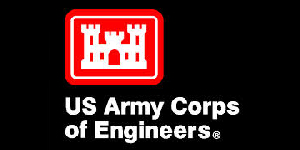
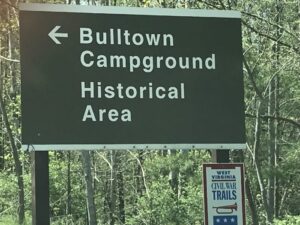 “The Bulltown Historical Area contains an original battlefield site (which includes a Federal fort area with original trenches) under Federal law protection. This was the site of the Battle of Bulltown which occurred on October 13, 1863 and the Federal occupation which occurred from 1861-1865.”
“The Bulltown Historical Area contains an original battlefield site (which includes a Federal fort area with original trenches) under Federal law protection. This was the site of the Battle of Bulltown which occurred on October 13, 1863 and the Federal occupation which occurred from 1861-1865.”
Explore information from US Army Corps of Engineers’ “Bulltown Historic Area” Website (pdf)
Explore information from US Army Corps of Engineers’ “Bulltown Historic Area Map” (pdf)
“Droop Mountain Battlefield Memorial” – November 6, 1863
![]() “Civil War buffs marked the 150th memorial of the Battle of Droop Mountain at Droop Mountain Memorial State Park on Nov. 7, 2013.” (2:19/2013/Charleston Gazette)
“Civil War buffs marked the 150th memorial of the Battle of Droop Mountain at Droop Mountain Memorial State Park on Nov. 7, 2013.” (2:19/2013/Charleston Gazette)
<<More information about the Battles of Carnifex Ferry and Droop Mountain are on the “State Parks/Forests” page>>
“Former State Park Superintendent Reflects on Battle of Droop Mountain” – WV MetroNews
May 24, 2020
![]() “The Battle of Droop Mountain, in November of 1863 is known as the largest Civil War battle on West Virginia soil and the action that ended Confederate resistance in the Mountain State. . .”
“The Battle of Droop Mountain, in November of 1863 is known as the largest Civil War battle on West Virginia soil and the action that ended Confederate resistance in the Mountain State. . .”
“John Singleton Mosby in West Virginia: Civil War West Virginia” – April 1865
![]() “West Virginia is often not associated with John Singleton Mosby, but the state’s Eastern Panhandle was an important part of his operations. Here, learn about one of the final actions of the famed Mosby’s Rangers (Raiders) with Garry Adelman and former park ranger and Co-Founder of the American Battlefield Trust, Dennis Frye.” (7:17/2020/American Battlefield Trust)
“West Virginia is often not associated with John Singleton Mosby, but the state’s Eastern Panhandle was an important part of his operations. Here, learn about one of the final actions of the famed Mosby’s Rangers (Raiders) with Garry Adelman and former park ranger and Co-Founder of the American Battlefield Trust, Dennis Frye.” (7:17/2020/American Battlefield Trust)
West Virginia Civil War / Statehood
“Born of Rebellion: West Virginia Statehood and the Civil War”
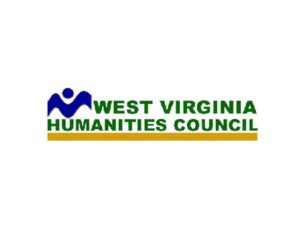
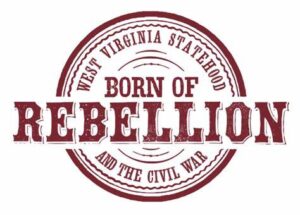 “The Council’s latest flagship exhibit is Born of Rebellion: West Virginia Statehood and the Civil War. This comprehensive, large-scale experience covers sectional tensions within Virginia preceding the Civil War, the violence and chaos of the war surrounding West Virginia’s formation, and the difficult aftermath as the new state struggled to forge its destiny during Reconstruction. Born of Rebellion explores this tumultuous and complex era from a wide range of perspectives, including politicians, common soldiers, women, and African Americans. Not simply a story of war and politics, Born of Rebellion conveys to audiences the complexities and pitfalls that accompanied West Virginia’s arduous journey to separation from Virginia.”
“The Council’s latest flagship exhibit is Born of Rebellion: West Virginia Statehood and the Civil War. This comprehensive, large-scale experience covers sectional tensions within Virginia preceding the Civil War, the violence and chaos of the war surrounding West Virginia’s formation, and the difficult aftermath as the new state struggled to forge its destiny during Reconstruction. Born of Rebellion explores this tumultuous and complex era from a wide range of perspectives, including politicians, common soldiers, women, and African Americans. Not simply a story of war and politics, Born of Rebellion conveys to audiences the complexities and pitfalls that accompanied West Virginia’s arduous journey to separation from Virginia.”
“WV Encyclopedia Exhibit Companion”
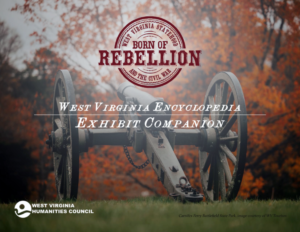 “Hungry for more history? Explore more articles on statehood and the Civil War with this exclusive exhibit companion.”
“Hungry for more history? Explore more articles on statehood and the Civil War with this exclusive exhibit companion.”
Includes more than a hundred links/entries – “Click on any entry for a West Virginia Encyclopedia article on that topic.”
Explore West Virginia Humanities Council’s “Born of Rebellion: West Virginia Statehood and the Civil War Exhibit Companion” Website (pdf)“A State Born… from a Nation Torn” (10 parts) – West Virginia Civil War Video Series – West Virginia Tourism


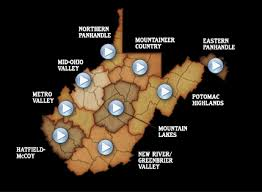
“The American Civil War raged for four years (1861-1865), pitting brother against brother at the cost of more than 600,000 lives. Out of the war, however, rose a new state, the only one created as a direct result of the war – West Virginia!”
“Explore West Virginia’s riveting history and tumultuous birth, told through nine distinct regions of the state.”

1 “Introduction” – “A State Born… from a Nation Torn”
“The harrowing battle raged for four years, pitting brother against brother at the cost of more than 600,000 lives. Out of the Civil War, however, there rose a new state, and the only created as a direct result of the war – West Virginia.” (3:58/2011/WV Tourism)

2 “Eastern Panhandle Region” – “A State Born… from a Nation Torn”
Eastern Panhandle Battlefield Map (:29) – West Virginia Civil War Battles and Engagements in the Eastern Panhandle Region
“The Eastern Panhandle of West Virginia played an important role in the Civil War with significant sites such as Harpers Ferry, where abolitionist John Brown was taken captive, and the home of Belle Boyd, southern spy.” (7:19/2011/WV Tourism)

3 “Hatfield – McCoy Region” – “A State Born… from a Nation Torn”
Hatfield – McCoy Region Battlefield Map (:29) – West Virginia Civil War Battles and Engagements in the Hatfield – McCoy Region
“The Hatfield-McCoy region derives its name from the famous family feud whose leaders fought for opposing sides during the war. The region is the site of several engagements, including the Battle of Boone County Courthouse. Battles also were fought in Peytona and Chapmanville.” (5:24/2011/WV Tourism)

4 “Metro Valley Region” – “A State Born… from a Nation Torn”
Metro Valley Region Battlefield Map (:29) – West Virginia Civil War Battles and Engagements in the Metro Valley Region
“The Metro Valley was the site of intense fighting in 1861 and 1862. The region is dotted with Civil War sites, from Guyandotte to Gauley Bridge. The historic Craik-Patton House in Charleston belonged to Confederate officer George S. Patton, grandfather to the WWII general of the same name.” (4:45/2011/WV Tourism)

5 “Mid-Ohio Valley Region”- “A State Born… from a Nation Torn”
(The Mid-Ohio Valley Region does not have a Battlefield Map.)
“This West Virginia travel region is home to Fort Boreman Park, which marks the site of a fort that protected the Union’s navigation of the Ohio River and the port of Parkersburg, and Blennerhassett Museum, which boasts a growing Civil War exhibit.” (6:36/2011/WV Tourism)

6 “Mountain Lakes Region” – “A State Born… from a Nation Torn”
Mountain Lakes Region Battlefield Map (:29) – West Virginia Civil War Battles and Engagements in the Mountain Lakes Region
“The Mountain Lakes travel region of West Virginia is the location of the boyhood home of Thomas “Stonewall” Jackson, Carnifex Ferry Battlefield State Park, and Union Camp Tyler, later called the Trans-Allegheny Asylum.” (6:35/2011/WV Tourism)

7 “Mountaineer Country Region” – “A State Born… from a Nation Torn”
Mountaineer Country Region Battlefield Map (:29) – West Virginia Civil War Battles and Engagements in the Mountaineer Country Region
“Mountaineer Country, a travel region in West Virginia, boasts the scene of the first land battle of the Civil War at Philippi. It holds many other firsts such as Union soldier killed and amputation.” (4:59/2011/ WV Tourism)

8 “New River/Greenbrier Valley Region” – “A State Born… from a Nation Torn”
New River/Greenbrier Valley Region Battlefield Map (:29) – West Virginia Civil War Battles and Engagements in the New River / Greenbrier Valley Region
“The New River/Greenbrier Valley area of West Virginia is home to White Sulphur Springs and the Old White hotel, now The Greenbrier resort, then used by Confederates as a Civil War hospital. Other well-known battle sites include Lewisburg and Princeton. Robert E. Lee’s famous horse Traveler was purchased in the Greenbrier area.” (5:31/2011/ WV Tourism)

9 “Northern Panhandle Region” – “A State Born… from a Nation Torn”
(The Northern Panhandle Region does not have a Battlefield Map.)
“Wheeling’s Independence Hall is the site where West Virginia was born, and the city served as the state’s first capital. Camp Carlisle on Wheeling Island was a muster point and training camp for Union troops during the Civil War.” (4:27/2011/ WV Tourism)

10 “Potomac Highlands Region” – “A State Born… from a Nation Torn”
Potomac Highlands Region Battlefield Map (:29) – West Virginia Civil War Battles and Engagements in the Potomac Highlands Region
“The Potomac Highlands travel region of West Virginia is rich in Civil War heritage. The Battle of Rich Mountain solidified control of the B & O Railroad and set up West Virginia for statehood. The area gave Robert E. Lee his first defeat.” (8:14/2011/ WV Tourism)
“You Are There: West Virginia Statehood”
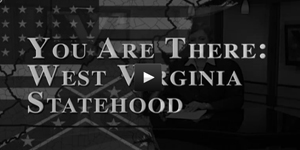
 “This video from West Virginia Public Broadcasting allows students to explore the West Virginia Statehood movement through the eyes of individuals who lived during that time period. Students will hear news reports from locations around the new state, see interviews with a soldier, people on the street, and learn more about the naming of the state and creation of the state seal and motto.” (39:45/2013/ WV Public Broadcasting)
“This video from West Virginia Public Broadcasting allows students to explore the West Virginia Statehood movement through the eyes of individuals who lived during that time period. Students will hear news reports from locations around the new state, see interviews with a soldier, people on the street, and learn more about the naming of the state and creation of the state seal and motto.” (39:45/2013/ WV Public Broadcasting)
“West Virginia: The Road to Statehood”
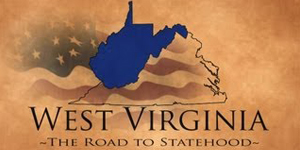
 “This documentary brings to life the issues, differences and disagreements that divided the Commonwealth of Virginia, turning families and neighbors against one another throughout what is now West Virginia.” (47:52/2013/ WV Public Broadcasting)
“This documentary brings to life the issues, differences and disagreements that divided the Commonwealth of Virginia, turning families and neighbors against one another throughout what is now West Virginia.” (47:52/2013/ WV Public Broadcasting)
Explore PBS Learning Media’s “West Virginia: The Road to Statehood” website to view video
“West Virginia Statehood”
 Extensive Story of West Virginia Statehood
Extensive Story of West Virginia Statehood
Explore West Virginia Archives and History’s “West Virginia Statehood” Website
“Statehood”
Very extensive list of West Virginia Statehood resources in three categories:
Primary resources; Secondary Resources; Individuals
Explore West Virginia Archives and History’s “Statehood” Website
“Child of the Rebellion”

Includes:
Timeline of West Virginia: Civil War and Statehood
Biographies of Statehood Leaders
Biographies of Members of the First West Virginia Legislature
Biographies of Western Virginia Delegates to the Richmond Convention
West Virginia and the Civil War: Annotated Bibliography
West Virginia State Archives Civil War Manuscripts, Special Collections, and Archival Holdings
Timeline Trivia Question
Sesquicentennial Moments
West Virginia Union Militia Database
West Virginia Union Militia Letters
West Virginia Union Militia Muster Rolls
Civil War and Statehood Photographs
“Military Events in West Virginia During the Civil War, 1861-1865,” by Allen W. Jones
List, African American Soldiers from West Virginia
List, Recruiting Officers in West Virginia
Reminiscences, by T.B.A. David, 1908
Election Precincts in West Virginia Counties
Other Resource Links include:
John Brown:
“His Soul Goes Marching On: The Life and Legacy of John Brown” (online exhibit)
“John Brown/Boyd B. Stutler Collection Database”
 West Virginia Statehood:
West Virginia Statehood:
“A State of Convenience: The Creation of West Virginia” (online exhibit)
“Civil War in West Virginia”
Explore West Virginia Archives and History’s “Child of the Rebellion” Website
“A State of Convenience” – Online Exhibit

 “We come here to carry out and execute, and it may be, to institute a government for ourselves. We are determined to live under a State Government in the United States of America and under the Constitution of the United States. It requires stout hearts to execute this purpose; it requires men of courage – of unfaltering determination; and I believe, in the gentlemen who compose this Convention, we have the stout hearts and the men who are determined in this purpose. – Arthur Boreman, First Session of the Second Wheeling Convention, June 12, 1861″
“We come here to carry out and execute, and it may be, to institute a government for ourselves. We are determined to live under a State Government in the United States of America and under the Constitution of the United States. It requires stout hearts to execute this purpose; it requires men of courage – of unfaltering determination; and I believe, in the gentlemen who compose this Convention, we have the stout hearts and the men who are determined in this purpose. – Arthur Boreman, First Session of the Second Wheeling Convention, June 12, 1861″
Includes:
Introduction
1: East vs. West
2: Election of 1860
3: Richmond Convention
4: Clarksburg Convention
5: First Wheeling Convention
6: Ratification of the Ordinance of Secession
7: First Session of the Second Wheeling Convention
8: Legislature of the Reorganized Government of Virginia
9: Second Session of the Second Wheeling Convention
10: Statehood Referendum
11: Constitutional Convention
12: Reorganized Government of Virginia Approves Separation
13: Congressional Debate on the Admission of West Virginia
14: Lincoln’s Dilemma
15: West Virginians Approve the Willey Amendment
16: The New State of West Virginia
Other Resource Links include:
“Learning Exercises”
“Primary Documents”
“Images”
“Other Sources”
West Virginia Civil War / Statehood
“West Virginia Statehood” – West Virginia Tourism
 “June 20, 1863 is the day West Virginia became the 35th State in the Union, the only state born out of the armed conflict of the Civil War. The three primary reasons West Virginia wanted to break way from her mother state, Virginia, were inequality in taxation, unequal representation in the legislature and unequal distribution of funds for public works in which the eastern part of the state was favored. On April 20, 1863, President Abraham Lincoln issued a proclamation through which, 60 days later, West Virginia would become a state. On that day Arthur I. Boreman, the state’s first governor, and other officers were inaugurated. Wheeling became the first capital. June 20 is now annually observed as “West Virginia Day,” a legal holiday in the State.
“June 20, 1863 is the day West Virginia became the 35th State in the Union, the only state born out of the armed conflict of the Civil War. The three primary reasons West Virginia wanted to break way from her mother state, Virginia, were inequality in taxation, unequal representation in the legislature and unequal distribution of funds for public works in which the eastern part of the state was favored. On April 20, 1863, President Abraham Lincoln issued a proclamation through which, 60 days later, West Virginia would become a state. On that day Arthur I. Boreman, the state’s first governor, and other officers were inaugurated. Wheeling became the first capital. June 20 is now annually observed as “West Virginia Day,” a legal holiday in the State.
“From the beginning of the Civil War, the people in western Virginia fought against seceding from the Union. In the wake of Fort Sumter and President Lincoln’s call for volunteers, sentiment in the Virginia Convention shifted. Many delegates who had opposed the secession now just as vigorously opposed the President’s intention to use coercive federal powers against a state. When the questions of Virginia’s position came to a vote, the majority cast their ballots to join the newly-formed Confederate States of America. However, of the 47 delegates from western Virginia, 32, more than two-thirds voted against leaving the Union. The future of the newly-proposed state depended upon control of western Virginia by the Union.
“On June 20, 1861, a new government of Virginia, known as the “Restored Government,” with Francis Pierpont as its head, was formed by the Wheeling Convention. This government pledged its support to the federal government in Washington. At a meeting in Wheeling, May 13, 1862, the “Restored Government” passed an act giving formal consent to the formation of a new state. On May 29, 1862, a bill was presented to the U. S. Congress requesting that a new state be formed and admitted to the Union. The bill forming the state of West Virginia was passed by the Congress and signed into law by President Lincoln on December 31, 1862. In 1915, the U. S. Supreme Court ruled that West Virginia owed Virginia over $12 million in pre-separation debt. The final debt payment was made in 1939.”
“Road to West Virginia Statehood” – West Virginia Sesquicentennial Commission
 “Being a child of the Civil War, West Virginia’s road to statehood is unique. Tension between western and eastern Virginia can be traced to at least 1776 when the Virginia Constitution granted voting rights only to white males owning at least 25 acres of improved land. This qualification favored the eastern portion of the state. Also, the Virginia Constitution allowed 2 delegates per county, regardless of population. The western part of the state only had a few counties that were very large geographically, so representation in the House of Delegates favored eastern Virginia as well. . . .”
“Being a child of the Civil War, West Virginia’s road to statehood is unique. Tension between western and eastern Virginia can be traced to at least 1776 when the Virginia Constitution granted voting rights only to white males owning at least 25 acres of improved land. This qualification favored the eastern portion of the state. Also, the Virginia Constitution allowed 2 delegates per county, regardless of population. The western part of the state only had a few counties that were very large geographically, so representation in the House of Delegates favored eastern Virginia as well. . . .”
“Born of the Civil War” – West Virginia Civil War Sesquicentennial Commission
 “We come here to carry out and execute, and it may be, to institute a government for ourselves. We are determined to live under a State Government in the United States of America and under the Constitution of the United States. It requires stout hearts to execute this purpose; it requires men of courage – of unfaltering determination; and I believe, in the gentlemen who compose this Convention, we have the stout hearts and the men who are determined in this purpose.”
“We come here to carry out and execute, and it may be, to institute a government for ourselves. We are determined to live under a State Government in the United States of America and under the Constitution of the United States. It requires stout hearts to execute this purpose; it requires men of courage – of unfaltering determination; and I believe, in the gentlemen who compose this Convention, we have the stout hearts and the men who are determined in this purpose.”
Arthur Boreman, First Session of the Second Wheeling Convention, June 12, 1861
Explore Information from West Virginia Civil War Sesquicentennial Commission’s “Born of the Civil War” (deactivated) Website to continue reading (pdf)
West Virginia Civil War / Statehood
“Chronology of the Formation of the 35th State” – West Virginia Sesquicentennial Commission

1860
| November 6 | Abraham Lincoln elected as the 16 President, gaining only 39.8% of the popular vote. |
| December 20 | A South Carolina Convention voted 169-0 to dissolve the state’s ties with the United States |
| January 7 | Virginia’s Governor John Letcher called a special session of the Virginia General Assembly to consider secession. |
| January 14 | The General Assembly called a state convention to be held in February for Virginians to vote on the issue of secession |
| February 13 | Virginia Secession Convention convenes |
| April 12 | Confederate troops fired on Union-held Fort Sumter in the harbor of Charleston, South Carolina, beginning the Civil War |
| April 17 | The Virginia State Convention voted to secede and approved a secession referendum for May 23. Western delegates fled home, as they believed their lives were in danger. |
| May 13-15 | Four-hundred thirty-six elected delegates from 17 Virginia counties met in Wheeling at Washington Hall. Several delegates had attended the General Assembly at Richmond.John S. Carlile of Harrison County insisted that the convention had the authority to take action on separation. Delegates formed a Committee on Credentials and a Committee on State and Federal Relations.Calling for the state of “New Virginia,” Carlile argued that Virginia must consent to the separation before it seceded from the Union. He felt that this was the only way to comply with Section Three of Article Four of the U.S. Constitution, which outlines the procedure by which one state is created from another.The Committee on State and Federal Relations recommended that a new state not be formed at this time and advised waiting for the results of the May 23 referendum |
| May 23 | An overwhelming majority of Virginians voted for secession, but the majority of those in the northwestern counties voted against it. |
| June 11 | One hundred and five delegates from thirty-eight counties attended |
| June 12 | Delegates selected Arthur I. Boreman as convention president. |
| June 13 | The convention moved to the U.S. Custom House. For the committee on Business, Carlile presented “A Declaration of the Rights of the People of Virginia,” declaring the Richmond government illegal. |
| June 19 | Delegates created the Restored Government of Virginia and adopted the “Declaration of Rights of the People of Virginia.” |
| June 20 | Convention delegates signed the “Declaration of Rights of the People of Virginia” and elected Francis H. Pierpont Governor of the Restored Government of Virginia. |
| July 1 | The General Assembly of the Restored Government of Virginia convened at the U.S. Custom House. |
| August 20-21 | The Committee of the Division of the State proposed a 39-county state known as “Kanawha.” The convention adjourned August 21. |
| October 24 | Thirty-eight percent of voters in affected counties ratified an ordinance for the formation of the new state and selected delegates for the constitutional convention. |
| November 26 | At the U.S. Custom House, the first constitutional convention assembled with 61 delegates present. |
| December 3 | The name “Kanawha” was withdrawn from consideration and “West Virginia” was chosen as the name for the new state |
| February 18 | Delegates unanimously approved the new constitution for West Virginia. | |
| April 4 | Voters ratified the constitution. | |
| May 6 | Governor Pierpont convened the General Assembly of the Restored Government of Virginia. | |
| May 13 | The assembly approved the creation of West Virginia with 48 counties. | |
| May 29 | Senator Waitman T. Willey submitted the application by West Virginia for admission to the Union to the U.S. Senate. Senator John S. Carlile drafted the Senate bill but waited until the end of the congressional session to submit it. His bill called for the addition of 15 counties, which supported the confederacy, a new constitutional convention to approve this revision, and the emancipation of slave children born after 1863. | |
| June 26 | Abolitionist Senator Charles Sumner of Massachusetts tried but failed to amend Carlile’s bill with a motion for emancipation of all slaves on July 4, 1863. | |
| July 1 | Waaitman T. Willey proposed an amendment to the statehood bill providing for the gradual emancipation of slaves. | |
| July 14 | The amended statehood bill passed the U.S. Senate by a vote of 23 to 17. | |
| December 21 | President Lincoln received the bill and asked his cabinet for advice. Half the cabinet favored the admission of West Virginia, and half opposed it. | |
| December 31 | President Lincoln signed the bill with these remarks: “The division of the State is dreaded as a precedent. But a measure made expedient by war is no precedent for times of peace. It is said that the admission of West Virginia is secession and tolerated only because it is our secession. Well, if we call it by that name there is still difference enough between secession against the Constitution and secession in favor of theConstitution. I believe the admission of West Virginia into the Union is expedient. |
| February 12 | The West Virginia Constitutional Convention reconvened. |
| February 18 | The convention unanimously adopted the Willey Amendment. |
| March 26 | Voters approved the constitution with the emancipation amendment. |
| April 20 | President Lincoln announced that the act of Congress admitting West Virginia into the Union would take effect in sixty days. |
| May 28 | Voters of the new state elect Arthur I. Boreman from Parkersburg as West Virginia’s first governor. |
| June 20 | West Virginia became America’s 35th state. |
“WV-150 Online Sesquicentennial Exhibit”
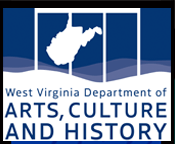
 “The WV-150 Sesquicentennial Exhibit celebrates our statehood from 1860 to the present with an eclectic collection of West Virginia artifacts and art. Many of the suggestions for what to showcase in the exhibit came from West Virginians.”
“The WV-150 Sesquicentennial Exhibit celebrates our statehood from 1860 to the present with an eclectic collection of West Virginia artifacts and art. Many of the suggestions for what to showcase in the exhibit came from West Virginians.”
Explore West Virginia Culture and History’s “WV-150 Online Sesquicentennial Exhibit” Website as found on Archive.org’s “Wayback Machine” – Time periods index at bottom of each page. Click on photos for larger images.
<<More about West Virginia’s Sesquicentennial is on the “WV150” page>>
“Virginia-West Virginia Boundary” – Virginia Places
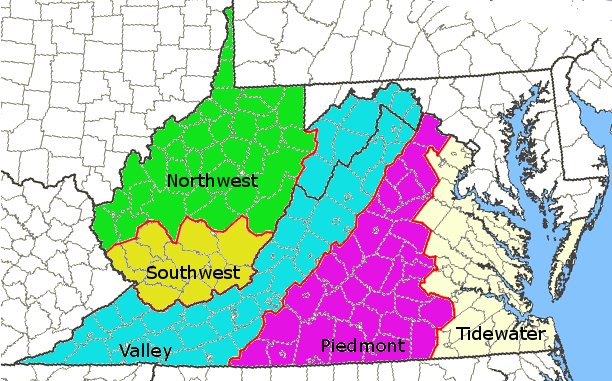 “In 1860, the Trans-Allegheny District of western Virginia was divided into Northwest and Southwest districts. Map Source: US Geological Survey (USGS) (showing modern county boundaries)”
“In 1860, the Trans-Allegheny District of western Virginia was divided into Northwest and Southwest districts. Map Source: US Geological Survey (USGS) (showing modern county boundaries)”
Very extensive discussion of the evolution of the boundary between the two states, including numerous maps.
Explore Virginia Places’ “Virginia-West Virginia Boundary” Website
“Virginia Places”
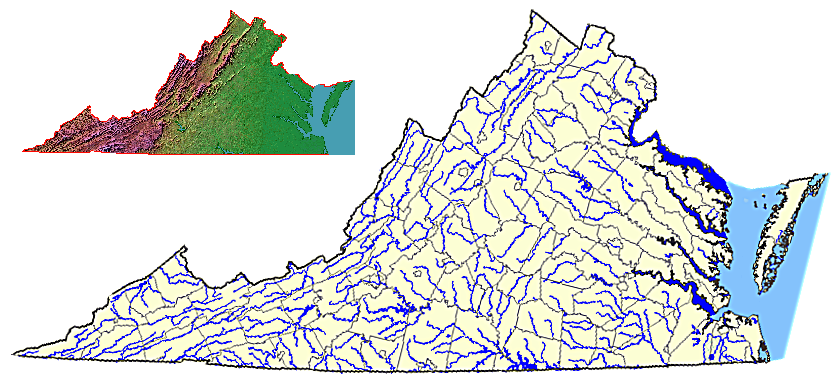 “This website is an exploration of Virginia history and geography. History helps us understand things that have happened, and geography examines the places where things have happened… or will be happening. We can learn from the past and prepare for tomorrow, but we need to go beyond memorizing dates and names. We need to use our capacity for critical thinking, to inquire into why things happen where they happen – and then to use whatever insights we gained from that experience to shape the future. . .”
“This website is an exploration of Virginia history and geography. History helps us understand things that have happened, and geography examines the places where things have happened… or will be happening. We can learn from the past and prepare for tomorrow, but we need to go beyond memorizing dates and names. We need to use our capacity for critical thinking, to inquire into why things happen where they happen – and then to use whatever insights we gained from that experience to shape the future. . .”
Explore “Virginia Places” Website
“West Virginia Independence Hall” – “Birthplace of West Virginia”


<<For information on West Virginia Independence Hall, see the “Museums” page.>>

WV Statehood / WV Civil War West Virginia Statehood
West Virginia in the Civil War West Virginia Civil War
A State Born From A Nation Torn A State Born A Nation Torn



